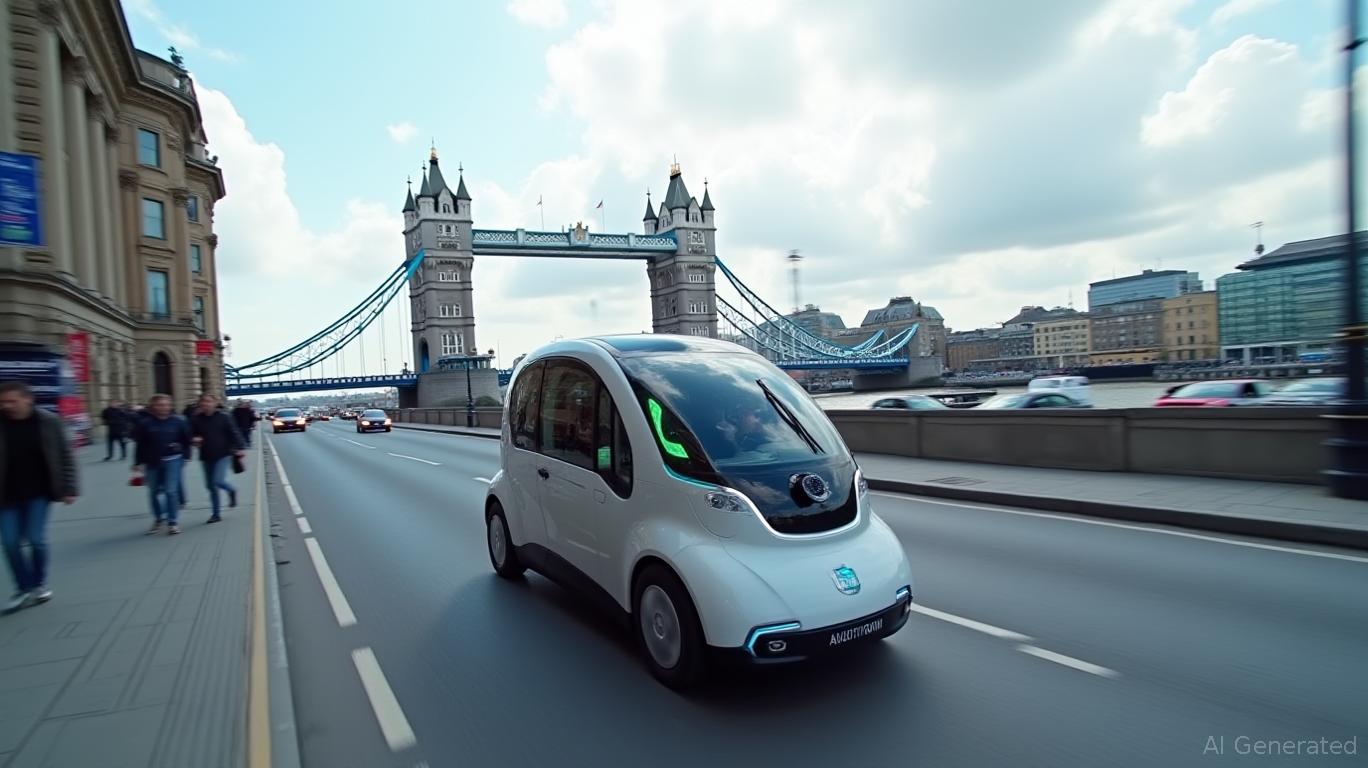The UK's Autonomous Revolution: Wayve-Uber Trials Signal a Paradigm Shift in AV Tech Adoption
The partnership between Wayve, a UK-based autonomous vehicle (AV) pioneer, and
, the global ride-hailing giant, to launch Level 4 (L4) autonomous trials in the UK by 2026 marks a pivotal milestone in the adoption of AI-driven mobility solutions. This collaboration underscores industry validation of Wayve's Embodied AI approach, which bypasses traditional reliance on high-definition (HD) maps and geofencing, and positions the UK as a testing ground for scalable, global AV deployment.
Industry Validation of AI-Driven AVs: A Tipping Point for Commercialization
Wayve's AV2.0 platform, which mimics human learning without HD maps, has already demonstrated its adaptability in 90 global cities. Its success in Wayve's Global Roadshow—navigating Europe, North America, and Japan—signals a breakthrough in reducing the technical complexity of AV systems. Uber's decision to partner with Wayve, rather than its existing US-based AV partner Momenta, highlights confidence in Embodied AI's scalability. This shift also reflects broader industry trends: 60% of AV developers now prioritize AI-first approaches over traditional sensor-heavy systems, according to a 2024 McKinsey report.
The UK government's regulatory support further accelerates adoption. The Automated Vehicles Act, set to fully take effect by late 2027, mandates that self-driving vehicles meet or exceed human safety standards. This framework, combined with fast-tracked trial approvals, positions the UK as a regulatory sandbox for global AV players. — estimates suggest it could exceed $500 billion, driven by commercialization in logistics, ride-hailing, and public transit.
Near-Term Risks: Navigating Technical, Regulatory, and Public Trust Hurdles
While the partnership is a positive catalyst, challenges remain. Technical risks include Wayve's ability to handle the UK's unique driving environments—narrow streets, roundabouts, and variable weather—without compromising safety. Uber's prior AV trials in the US faced incidents like passenger entrapment in San Francisco, underscoring the need for rigorous testing.
Regulatory delays pose another hurdle. The UK has pushed back its timeline for full AV deployment to 2027, citing safety concerns. Meanwhile, public skepticism persists: 37% of Brits express safety worries, per a 2024 poll. Gaining consumer trust will require transparent communication of trial outcomes and incremental rollout.
Long-Term Scalability: A Blueprint for Global Dominance
The partnership's true potential lies in its ability to scale beyond London. Wayve's mapless AI, combined with Uber's global network, could rapidly deploy AVs in European cities with similar driving challenges. The UK's economic upside—projected to create 38,000 jobs and add £42 billion to GDP by 2035—hints at broader macroeconomic benefits, including reduced congestion and improved accessibility for non-drivers.
Crucially, Wayve-Uber's success could catalyze broader industry consolidation. Competitors like Waymo and Momenta may face pressure to adopt similar AI-first strategies, while OEMs (original equipment manufacturers) could rush to integrate these systems into fleets. This dynamic creates opportunities for investors in three key areas:
- Sensor Technology: LiDAR and camera manufacturers like Luminar (LAZR) and Velodyne (VLDR) will benefit as AVs demand high-resolution environmental perception. .
- Data Infrastructure: Companies like NVIDIA (NVDA) and Amazon (AMZN), which provide cloud storage and AI compute power, are critical to processing the terabytes of data generated by AV trials.
- Regulatory Playmakers: Firms offering compliance tools, such as Everbridge (EVBG) for crisis management, or insurers like Allianz, could see demand rise as AVs redefine liability frameworks.
Investment Thesis: Bet on the Ecosystem, Not Just the Stars
While Wayve and Uber are central to this narrative, investors should focus on AV ecosystem enablers, which offer lower risk and diversification.
- Sensor Tech: Prioritize firms with patented LiDAR solutions or partnerships with AV developers. Luminar's recent deals with Ford and Intel's Mobileye make it a compelling play.
- Data Infrastructure: NVIDIA's AI-on-5G platform and partnerships with Wayve-like startups position it as an infrastructure leader.
- Regulatory Plays: Monitor legal tech firms like LegalZoom (LZ) or Aon (AON), which assist companies in navigating evolving AV regulations.
Avoid overexposure to pure-play AV stocks like Waymo or Cruise, which face execution risks. Instead, adopt a multi-sector basket focused on enabling technologies.
Conclusion: The AV Tipping Point is Near—Investors Must Act Now
The Wayve-Uber trials are not just a UK experiment but a global stress test for AI-driven autonomy. Their success—or failure—will reshape investor sentiment across the mobility sector. With regulatory tailwinds and scalable AI solutions, the AV market is primed for explosive growth. Investors ignoring this trend risk missing out on a once-in-a-decade opportunity to capitalize on next-gen transportation infrastructure.
For now, bet on the enablers: sensors, data, and compliance. The road ahead is autonomous—and investors who prepare will drive the future.

Comments
No comments yet